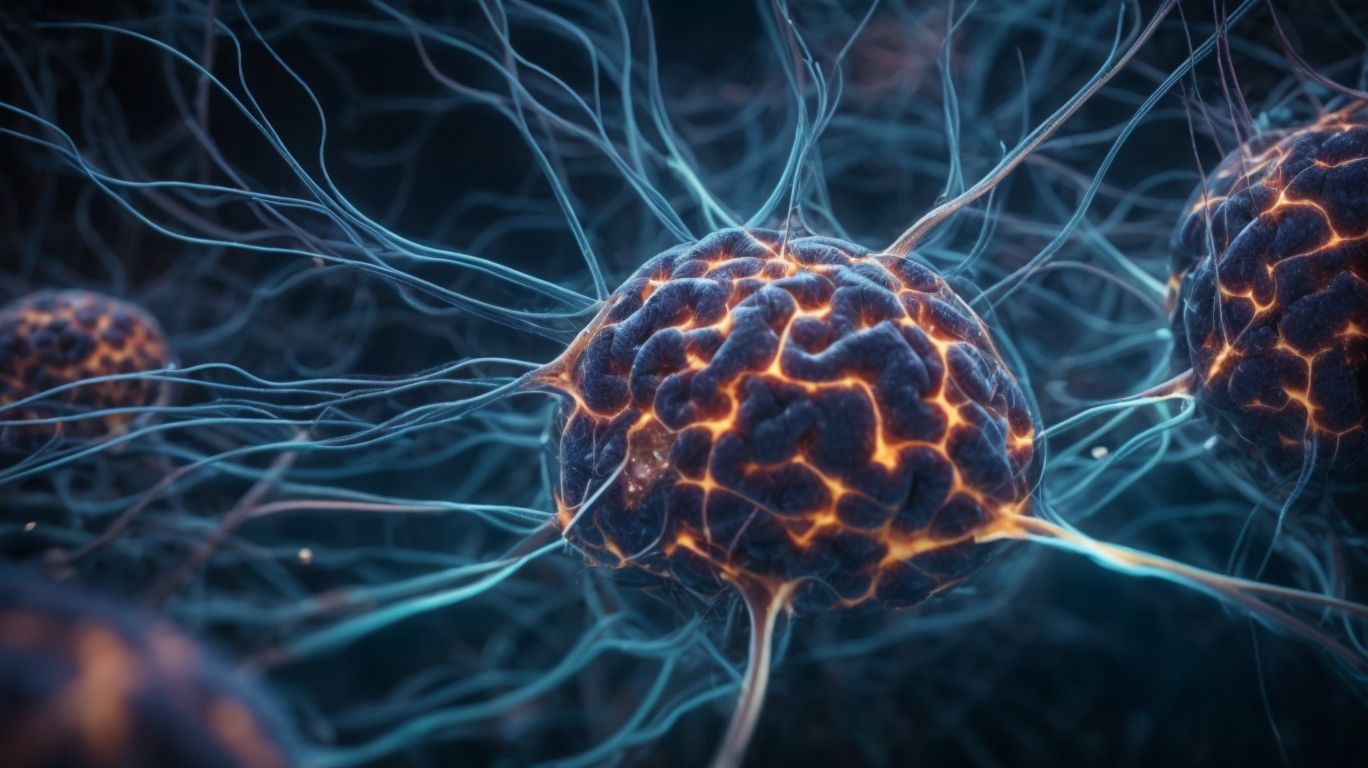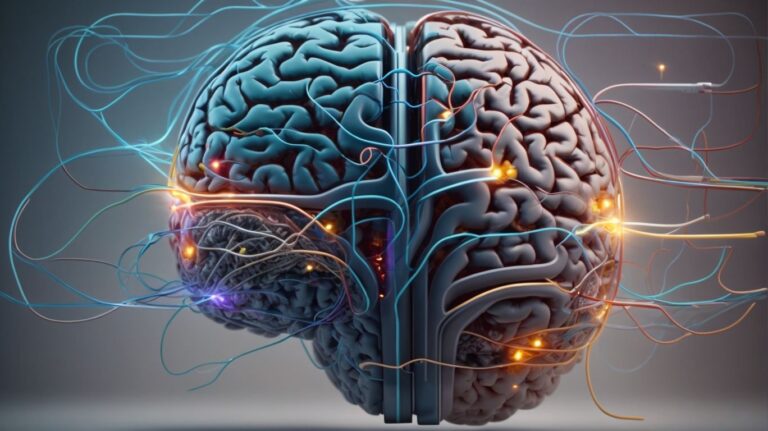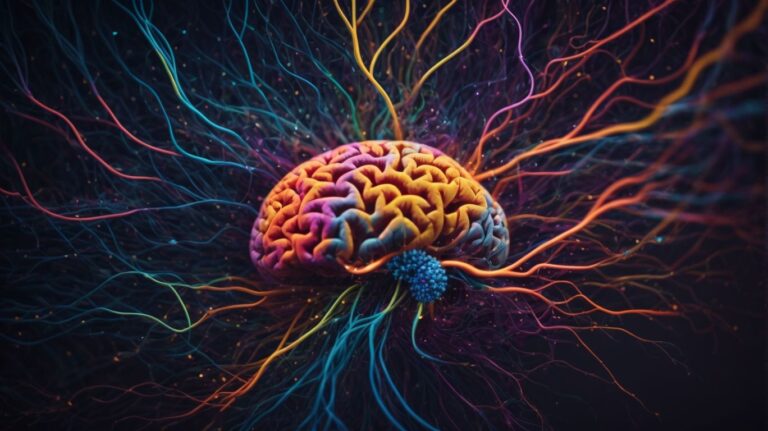Have you ever wondered how our brains process information from the environment around us? In the world of AP Psychology, one fascinating concept that sheds light on this process is transduction. From sensory perception to memory encoding, transduction plays a crucial role in our understanding of human cognition.
In this article, we will explore the mechanisms of transduction, the different types of transduction, its applications in psychology, as well as the limitations and study methods associated with this intriguing phenomenon. Let’s dive in and demystify transduction in AP Psychology!
Contents
- 1 What Is Transduction?
- 2 How Does Transduction Work?
- 3 What Are the Different Types of Transduction?
- 4 What Are the Applications of Transduction in Psychology?
- 5 What Are the Limitations of Transduction?
- 6 How Is Transduction Studied in Psychology?
- 7 Frequently Asked Questions
- 7.1 What is transduction in AP Psychology?
- 7.2 What are the different mechanisms of transduction in AP Psychology?
- 7.3 How does phototransduction work in vision?
- 7.4 What is the role of mechanotransduction in touch?
- 7.5 How does chemotransduction play a role in taste and olfaction?
- 7.6 What is the significance of understanding transduction in AP Psychology?
What Is Transduction?
Transduction is a fundamental process in sensory systems where sensory receptors convert physical or chemical stimuli into neural signals.
This essential mechanism allows the human body to interpret and make sense of the world around it by translating various stimuli into electrical signals that can be understood by the nervous system.
For example, in the case of vision, photoreceptor cells in the retina transduce light waves into electrical impulses, which are then processed by the brain to create visual perceptions.
Similarly, in the case of taste, taste buds use transduction to convert chemicals from food into signals that the brain can perceive as different tastes.
How Does Transduction Work?
Transduction works by detecting stimuli above the absolute threshold, the minimum intensity needed for perception, and discerning differences beyond the just-noticeable difference.
In sensory processing, transduction plays a crucial role in converting incoming stimuli into neural impulses that the brain can interpret. When a stimulus reaches a certain intensity above the absolute threshold, specialized sensory receptors are activated to begin the process of transduction. This occurs through a series of biological processes that result in the generation of action potentials that carry information along neural pathways. The signal detection theory helps explain how individuals respond to stimuli based on their perception, influenced by both sensitivity to detect a signal and biases in decision-making.
What Are the Different Types of Transduction?
Different types of transduction include sensory transduction, where sensory modalities are converted into neural signals, chemical transduction involving biochemical reactions, and mechanical transduction through physical stimuli.
In sensory transduction, sensory receptors translate various input signals such as light, sound, touch, taste, and smell into electrical signals that the nervous system can process. For example, in vision, photoreceptor cells in the retina convert light energy into electrical signals that are transmitted to the brain for visual perception.
Chemical transduction, on the other hand, occurs when chemical substances interact with specific receptors on cell membranes, triggering a cascade of biochemical reactions. An example of this is the sense of taste, where different taste buds on the tongue respond to various chemicals present in food, sending signals to the brain for interpretation.
Mechanical transduction involves the conversion of mechanical stimuli into electrical signals. Hair cells in the inner ear, for instance, respond to vibrations produced by sound waves, converting them into neural impulses that are sent to the brain for processing, allowing us to hear and maintain balance.
Sensory Transduction
Sensory transduction plays a crucial role in converting external stimuli into neural impulses across sensory systems like vision, hearing, touch, and more.
For vision, sensory transduction occurs in the retina where light stimuli are converted into electrical signals by photoreceptor cells such as cones and rods.
In hearing, the cochlea transforms mechanical vibrations from sound waves into neural impulses through specialized hair cells.
The sense of touch involves sensory receptors in the skin that detect pressure, temperature, and pain, triggering neural responses.
Each sensory modality follows specific transduction processes tailored to its unique stimuli, allowing the brain to interpret and process external information effectively.
Chemical Transduction
Chemical transduction involves the conversion of chemical stimuli into neural signals, particularly in senses like smell and taste, where molecules trigger sensory responses.
Within the olfactory system, this process starts with odor molecules binding to specific receptors on olfactory sensory neurons located in the nasal cavity. These receptors, which are proteins embedded in the cell membranes, initiate a cascade of events leading to the generation of neural impulses.
In contrast, the gustatory system relies on taste receptors found on taste buds on the tongue and other parts of the mouth. These taste receptors respond to different taste qualities like sweet, salty, sour, bitter, and umami, sending signals to the brain for interpretation and perception.
Mechanical Transduction
Mechanical transduction is involved in converting physical stimuli into neural signals in touch, vestibular senses related to balance and motion, and kinesthetic senses associated with body movements.
In touch perception, the skin is equipped with specialized receptors, such as Merkel cells and Meissner’s corpuscles, that translate mechanical pressure or vibration into electrical impulses. These signals travel through the somatosensory system to the brain, where they are interpreted and processed.
On the other hand, in the vestibular system, tiny hair cells in the inner ear detect movement and changes in head position, enabling us to maintain balance and posture.
What Are the Applications of Transduction in Psychology?
Transduction in psychology is vital for sensory perception, memory encoding processes, and the formation of associations in learning and conditioning.
Transduction involves the conversion of physical stimuli into neural signals that can be processed by the brain. Through this process, sensory information such as sight, sound, taste, smell, and touch is transformed into electrochemical signals that the brain can interpret. These neural signals play a crucial role in shaping how individuals perceive the world around them.
For example, research studies have demonstrated how differences in transduction mechanisms can lead to variations in how individuals perceive colors or tastes.
Sensory Perception
Sensory perception involves the initial processing of stimuli by ocular structures like the cornea, iris, and pupil, which regulate the amount of light entering the eye.
The cornea, the transparent outermost layer of the eye, plays a crucial role in refracting light rays onto the lens. Its curved shape helps bend incoming light to focus it directly onto the retina, ensuring a clear image is formed.
The iris, positioned behind the cornea, controls the size of the pupil. In bright environments, it contracts to reduce the amount of light entering the eye, protecting the retina from excessive exposure. Conversely, in dim lighting, the iris expands, dilating the pupil to allow more light for better visibility.
The pupil, the black circle at the center of the iris, serves as a gateway for light to enter the eye. Its size adjusts dynamically to regulate the amount of light reaching the lens. By constricting or dilating, it directly impacts the depth of field and clarity of vision, thereby influencing visual acuity.
Memory Encoding
Memory encoding involves the conversion of visual information by the retina, photoreceptors, and fovea into neural signals for storage and retrieval processes.
The intricate process of visual stimuli encoding starts with the retina, a complex layer of cells at the back of the eye that captures light and translates it into electrical signals. Within the retina, specialized photoreceptor cells like rods and cones are responsible for detecting different wavelengths of light and converting them into neural impulses. The fovea, located at the center of the retina, plays a vital role in high-acuity vision by concentrating cones, which are crucial for detailed and color vision.
Learning and Conditioning
Learning and conditioning processes involve the activation of rods and cones in the retina, along with signal-detection theories that explain perceptual thresholds and discrimination.
When we delve into the specifics of how visual receptors function in this context, we find that rods are more sensitive to low light levels, allowing for night vision and peripheral vision. On the other hand, cones are responsible for color vision and visual acuity in brighter lighting conditions. Through the interplay of these receptors, our brain deciphers incoming visual stimuli, forming the basis of our perceptual experiences.
What Are the Limitations of Transduction?
Transduction has limitations including sensory adaptation, perceptual illusions, and cognitive biases that can affect the accuracy and reliability of sensory processing.
In the context of sensory adaptation, our senses can become less responsive to constant stimuli over time, leading to decreased sensitivity. For instance, if you spend long periods in a room with a particular scent, you may stop noticing the smell altogether due to the process of adaptation.
Perceptual illusions, such as the Müller-Lyer illusion, demonstrate how visual perception can be distorted by contextual cues, influencing our judgment of geometric shapes. These illusions highlight the brain’s tendency to make assumptions based on prior experiences.
Cognitive biases, such as confirmation bias, can shape our perception by selectively processing information that aligns with preconceived beliefs. This can lead to misinterpreting ambiguous stimuli and reinforcing existing cognitive schemas.
Sensory Adaptation
Sensory adaptation follows Weber’s law, where gradual changes in stimulation, like light intensity on the sclera, lead to reduced neural responses over time.
This phenomenon occurs as sensory receptors in the scleral region become less reactive to a constant stimulus, enabling the nervous system to focus on detecting changes rather than maintaining sensitivity to unchanging stimuli. Through this process, the brain adjusts to the steady input, allowing for more efficient processing of new information.
As a result, our perception of stimuli is shaped by both the presence and absence of stimulus changes in the scleral area. By understanding sensory adaptation and its connection to Weber’s law, researchers can gain insights into how the brain adapts to varying levels of sensory input.
Perceptual Illusions
Perceptual illusions can arise due to discrepancies in visual cues processed by photoreceptors, leading to misinterpretations of depth, color, or motion.
These phenomena occur when the brain misinterprets the signals received from the eyes, creating a distorted perception of reality. One of the fascinating aspects of these illusions is their ability to showcase the intricate relationship between our sensory input and cognitive processing. Witnessing how our brains can be tricked by simple visual stimuli highlights the complexity of human perception. By studying these illusions, researchers gain valuable insights into how the visual system processes information and how cognitive biases can influence our understanding of the world.
Cognitive Biases
Cognitive biases impact decision-making processes and sensory judgments, influencing visual acuity assessments and subjective perceptions of stimuli.
Confirmation bias, for example, can lead individuals to seek out information that confirms their pre-existing beliefs about visual stimuli, rather than objectively assessing the stimuli based on their actual characteristics. This can color their overall perception, leading to biased conclusions. Moreover, availability heuristic may play a role in visual acuity evaluations, as individuals might give more weight to visually salient details rather than considering the full scope of information available.
How Is Transduction Studied in Psychology?
Transduction research in psychology employs diverse methodologies like experimental studies, neuroimaging tools, and in-depth case analyses to investigate sensory processes and neural responses.
Experimental designs play a crucial role in transduction research, as they allow researchers to manipulate variables and observe the resulting effects on sensory processing. Neuroimaging technologies such as fMRI and EEG provide valuable insights into the neural mechanisms involved in sensory transduction. These tools enable scientists to visualize brain activity in real-time and pinpoint regions responsible for specific sensory functions.
Experimental Methods
Experimental methods in transduction research often involve stimuli presentation to the cornea and the iris, measuring physiological responses to gauge sensory perceptions.
Corneal stimulation typically consists of applying controlled pressures or temperatures to the cornea to elicit sensory responses. This can be done using specialized instruments such as air puffs or thermal probes.
On the other hand, iris stimulation involves exposing the iris to varying light intensities or wavelengths to trigger specific neural pathways. Physiological data from these responses is collected through electrodes placed on the skin to measure electrical signals generated by the nervous system. This data is then analyzed to understand how sensory information is processed and transmitted.
Neuroimaging Techniques
Neuroimaging tools such as fMRI track changes in pupil dilation and lens adjustments during sensory tasks, providing insights into neural activation patterns.
Further advancements in the field of neuroscience have allowed researchers to delve deeper into the intricate workings of the brain, particularly in the context of sensory processing mechanisms. By utilizing neuroimaging methods like fMRI, scientists can now not only observe but also quantify the neural responses associated with pupil dynamics and lens accommodation.
Through the analysis of real-time neural imaging data, patterns emerge that shed light on how the brain processes sensory information, highlighting the critical interplay between the visual system and cognitive functions. These innovative techniques offer a window into the complexities of human perception and cognition, paving the way for a more profound understanding of the interconnectedness between neural activity and sensory experiences.
Case Studies and Observational Research
Case studies and observations on rod responses in the retina offer valuable insights into transduction processes, showcasing real-world applications of sensory research.
By examining the behavior of rods in response to light stimuli, researchers can decipher the intricate mechanisms that govern sensory perception and neural signaling. This data aids in understanding how visual information is processed and transmitted through the neural pathways, shedding light on the complexities of vision. Observational studies provide a glimpse into the intricate dance between external stimuli and internal neural processes, elucidating the intricate interplay between sensory input and neural response.
Frequently Asked Questions
What is transduction in AP Psychology?
Transduction in AP Psychology is the process by which sensory information is converted into neural signals that can be interpreted by the brain. It is an essential mechanism for understanding how we perceive and interpret the world around us.
What are the different mechanisms of transduction in AP Psychology?
There are four main mechanisms of transduction in AP Psychology: phototransduction for vision, mechanotransduction for touch and hearing, chemotransduction for taste and olfaction, and nociceptors for pain and temperature.
How does phototransduction work in vision?
Phototransduction in vision involves light entering the eye and being converted into neural signals by photoreceptors in the retina. These signals are then transmitted to the brain, where they are interpreted as visual information.
What is the role of mechanotransduction in touch?
Mechanotransduction in touch refers to the conversion of physical pressure or vibration into neural signals that are sent to the brain. This process allows us to perceive tactile sensations such as pressure, touch, and vibration.
How does chemotransduction play a role in taste and olfaction?
Chemotransduction in taste and olfaction involves the detection of chemical molecules in the mouth and nose, respectively. These molecules activate chemoreceptors, which send signals to the brain, allowing us to perceive different tastes and smells.
What is the significance of understanding transduction in AP Psychology?
Understanding transduction is crucial in AP Psychology as it helps us understand how we perceive, interpret, and respond to the world around us. It also allows us to better understand sensory disorders and how they can affect our perception and behavior.



